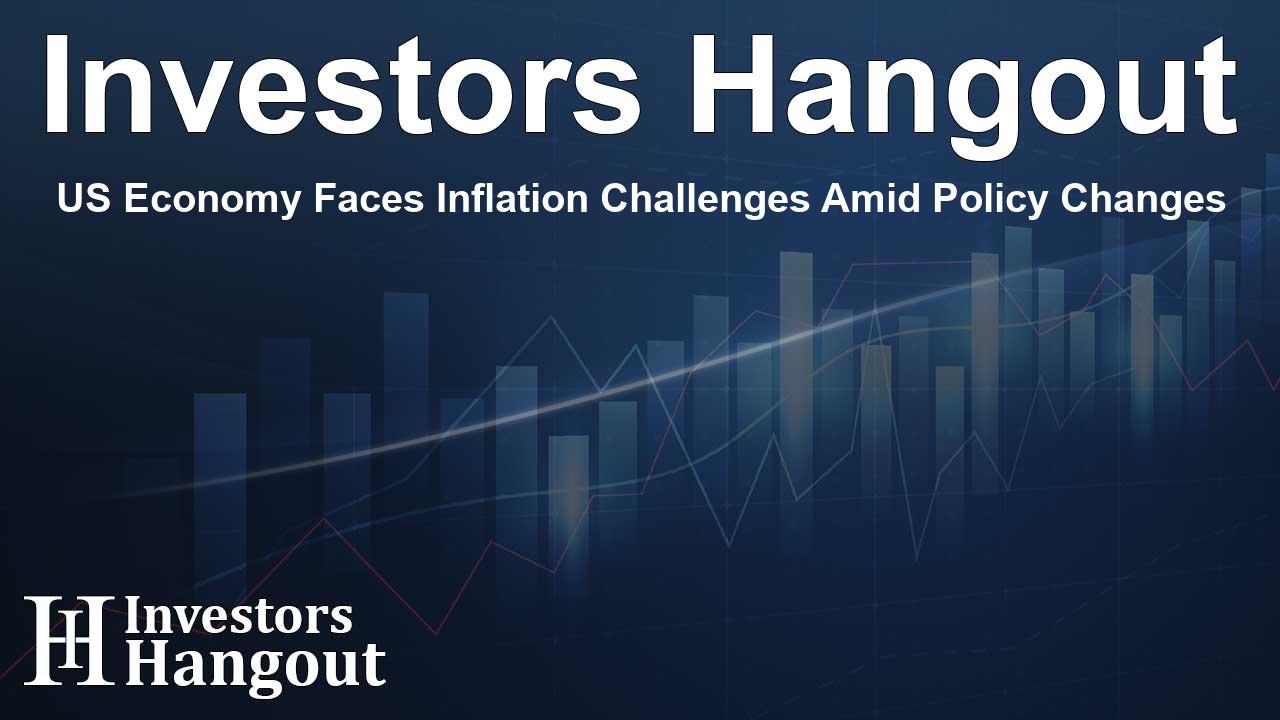US Economy Faces Inflation Challenges Amid Policy Changes

Economic Vulnerability to Inflationary Shocks
In recent discussions, a senior official from the Federal Reserve has raised alarms about the increasing susceptibility of the US economy to inflationary shocks. This comes at a time when businesses are bracing for potential economic changes linked to shifting political landscapes. The insights of Tom Barkin, president of the Richmond Fed, highlight growing consumer pricing pressures and concerns for future economic stability.
Barkin's Insights on Inflation and Monetary Policy
Tom Barkin, who also serves as a voting member of the Federal Open Market Committee, shared his thoughts with the Financial Times regarding the ongoing battle with inflation. While there is an expectation for inflation to gradually decrease, recent economic data suggest that this progress is not as rapid as many hoped.
Business Strategies in a Changing Economy
Barkin pointed out that companies seem to be more willing to pass on rising costs to consumers than they were in earlier years, though not to the same extent as during the peaks of the pandemic. This shift in behavior is a source of concern, as it suggests persistent inflationary pressures within the economy.
Concerns Over Political Policies
Drawing from his extensive experience, including his former role as chief risk officer at McKinsey, Barkin noted that many businesses are apprehensive about potential tariffs and immigration policies proposed by Donald Trump. These initiatives could have inflationary ramifications in the marketplace. However, he also mentioned that the former president's focus on enhancing domestic energy production could serve to alleviate some inflationary pressures.
Economic Frictions and Stagflation Risks
Economists across the nation share these worries, highlighting the possibility that broad tariffs could ignite inflation depending on their execution. Moreover, mass deportations and their economic implications could not only elevate prices but also stagnate growth, posing a risk for stagflation. In contrast, Trump and his advisors maintain that deregulation and tax reductions are pathways to bolster the economy without triggering inflation.
Federal Reserve's Approach to Policy Adjustments
Barkin firmly believes that the Fed should not hastily alter its monetary policy in anticipation of prospective government policy shifts. He stated, “We shouldn’t try to solve it before it happens,” emphasizing the importance of reacting appropriately to actual economic conditions rather than hypothetical concerns.
Interest Rate Cuts and Economic Indicators
This year, the Federal Reserve has already implemented two interest rate cuts and is contemplating another adjustment in December. Fed Chair Jay Powell has reiterated a cautious stance, indicating that there is no immediate need to drastically increase interest rates, especially given the current resilience of the American economy.
Future Decisions Based on Data
Although Barkin did not venture to predict the outcomes of the December meeting, he noted the crucial role that incoming economic data will play in shaping future decisions. Persistent inflation above target levels would necessitate a more cautious approach regarding further rate reductions, while rising unemployment could prompt a more aggressive stance from the Federal Reserve.
Recalibrating Economic Strategies
In describing the Fed's recent maneuvers as a “recalibration,” Barkin suggested that as the Fed shifts towards a “normalization phase,” discussions about the speed of rate adjustments will become increasingly significant. This shift aims to align monetary policy closer to a state of ‘neutral,’ where it neither stimulates nor restrains economic growth.
Frequently Asked Questions
What systems are in place to manage inflation risks?
The Federal Reserve uses various tools including interest rate adjustments and economic monitoring to manage inflation risks effectively.
How does political policy impact economic stability?
Changes in political leadership can influence tariffs and economic policies, which in turn affect inflation and business pricing strategies.
Why is consumer pricing pressure a concern for economists?
Increasing consumer pricing pressure can indicate underlying inflation, creating challenges for economic growth and stability.
How does the Fed approach interest rate cuts?
The Federal Reserve evaluates economic data, including inflation rates and unemployment figures, to determine the necessity of interest rate adjustments.
What does 'normalization phase' mean for the economy?
The 'normalization phase' refers to a time when monetary policy returns to a neutral stance, balancing economic growth with inflation management.
About Investors Hangout
Investors Hangout is a leading online stock forum for financial discussion and learning, offering a wide range of free tools and resources. It draws in traders of all levels, who exchange market knowledge, investigate trading tactics, and keep an eye on industry developments in real time. Featuring financial articles, stock message boards, quotes, charts, company profiles, and live news updates. Through cooperative learning and a wealth of informational resources, it helps users from novices creating their first portfolios to experts honing their techniques. Join Investors Hangout today: https://investorshangout.com/
Disclaimer: The content of this article is solely for general informational purposes only; it does not represent legal, financial, or investment advice. Investors Hangout does not offer financial advice; the author is not a licensed financial advisor. Consult a qualified advisor before making any financial or investment decisions based on this article. The author's interpretation of publicly available data shapes the opinions presented here; as a result, they should not be taken as advice to purchase, sell, or hold any securities mentioned or any other investments. The author does not guarantee the accuracy, completeness, or timeliness of any material, providing it "as is." Information and market conditions may change; past performance is not indicative of future outcomes. If any of the material offered here is inaccurate, please contact us for corrections.